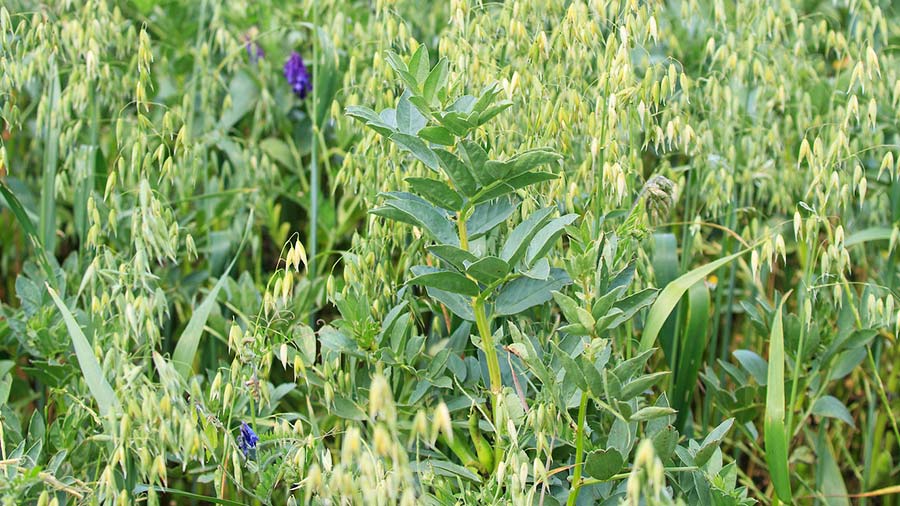Trial sees 9.7t/ha yield from zero-input bean-oat bicrop
 © Tim Scrivener
© Tim Scrivener A crop of oats grown with no inputs apart from seed and a companion crop of winter beans has produced an exceptional yield in a Northamptonshire trial.
Bicropping is gaining increasing interest from farmers and researchers as a means of reducing costs and this was investigated in one plot at Agrovista’s Lamport AgX trials site.
Niall Atkinson, Agrovista’s farming systems research and development adviser, explains that the aim was to look at maximising winter oat production at least cost per tonne.
See also: Beans and oats bicrop helps eliminate fertiliser on Cambs farm
“The beans were included as a means to reduce inputs, particularly nitrogen. But we actually applied no inputs at all except seed.”
This included no fertiliser, insecticide, fungicide or herbicides, he adds.
Same day
The beans were direct-drilled on 28 October 2021 at 38 seeds/sq m, followed by the winter oats at 340 seeds/sq m on the same day – full seed rates for both crops.
A conventional plot of oats alongside received 120kg/ha N and commercial applications of pre-emergence herbicide, fungicide (two applications), growth regulator and herbicide.
“The bicropped plot didn’t look particularly good for a while, but from May onwards, it got better and better,” says technical manager Mark Hemmant.
“In the end, it yielded 9.36t/ha of good quality grain, only 0.5t/ha short of the conventional crop, and we got 0.42t/ha of beans into the bargain.”
Nitrogen offtakes were almost exactly the same for both plots of oats – 193kg/ha for the conventional plot and 191kg/ha for the bicropped oats, showing the effectiveness of the beans in supplying nitrogen.
Mr Atkinson says the big question now is the potential for a long-term build-up of disease and pests, such as foot rot and stem nematodes in beans, from growing pulses too frequently.
“But, if you can grow this combination for no cost apart from seed, it opens up lots of questions,” he adds.
“It may also be worth looking to see if other bicropping options can reduce the potential problems while cutting costs.”
Project Lamport’s successor
The trial site in Northamptonshire has evolved from being a place demonstrating crop rotations, cultivations and innovative use of crops to help with blackgrass control and enable the field to remain in production, to become something much bigger.
Lamport AgX is looking at many aspects of soil health, both for demonstration and also as fully replicated trials.
These include comparing different soil levels, types and depths of cultivations, use of cover crops, their make-up, establishment methods and time destruction.

